Michiel van den Broeke
Polar Meteorology, Utrecht University
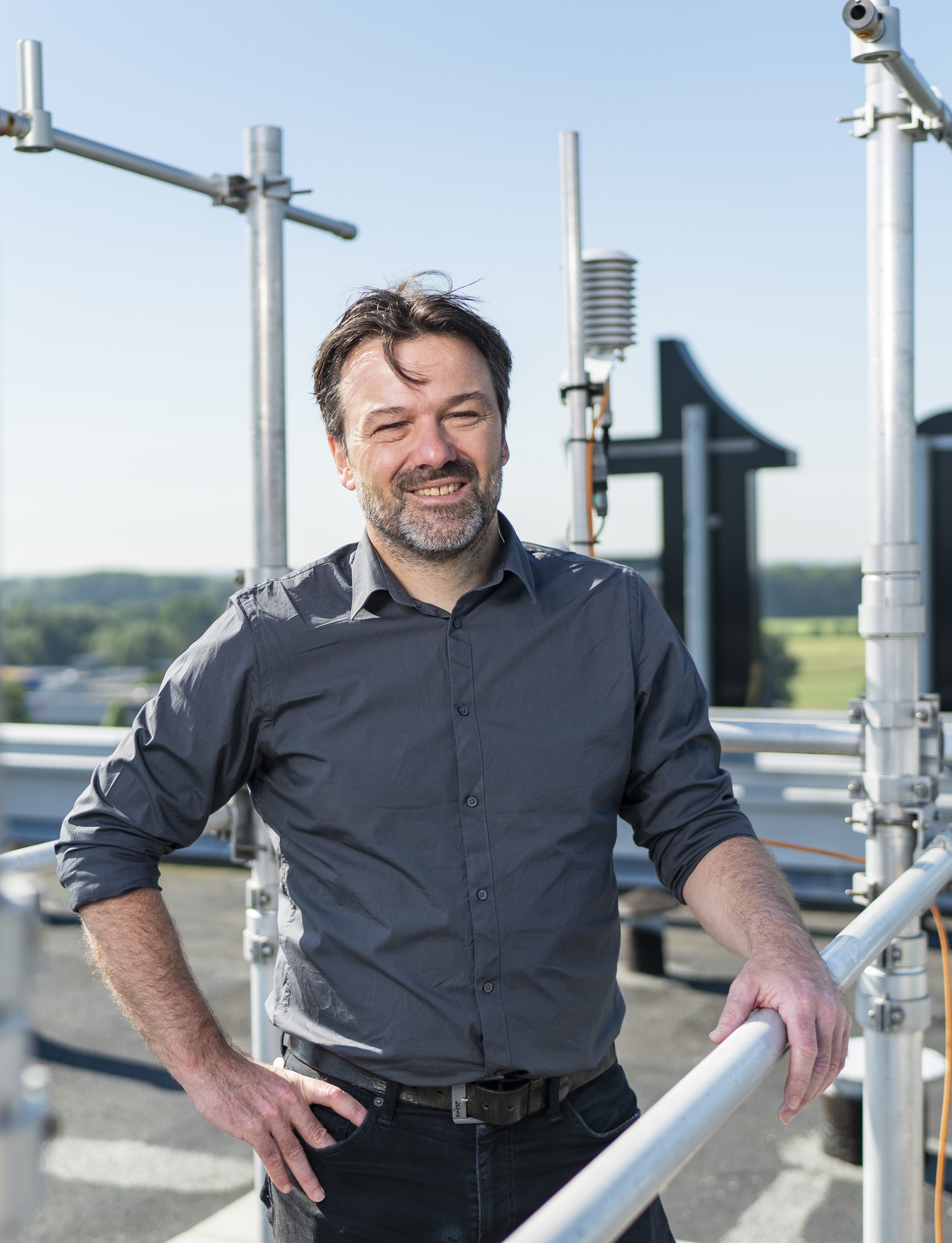
News
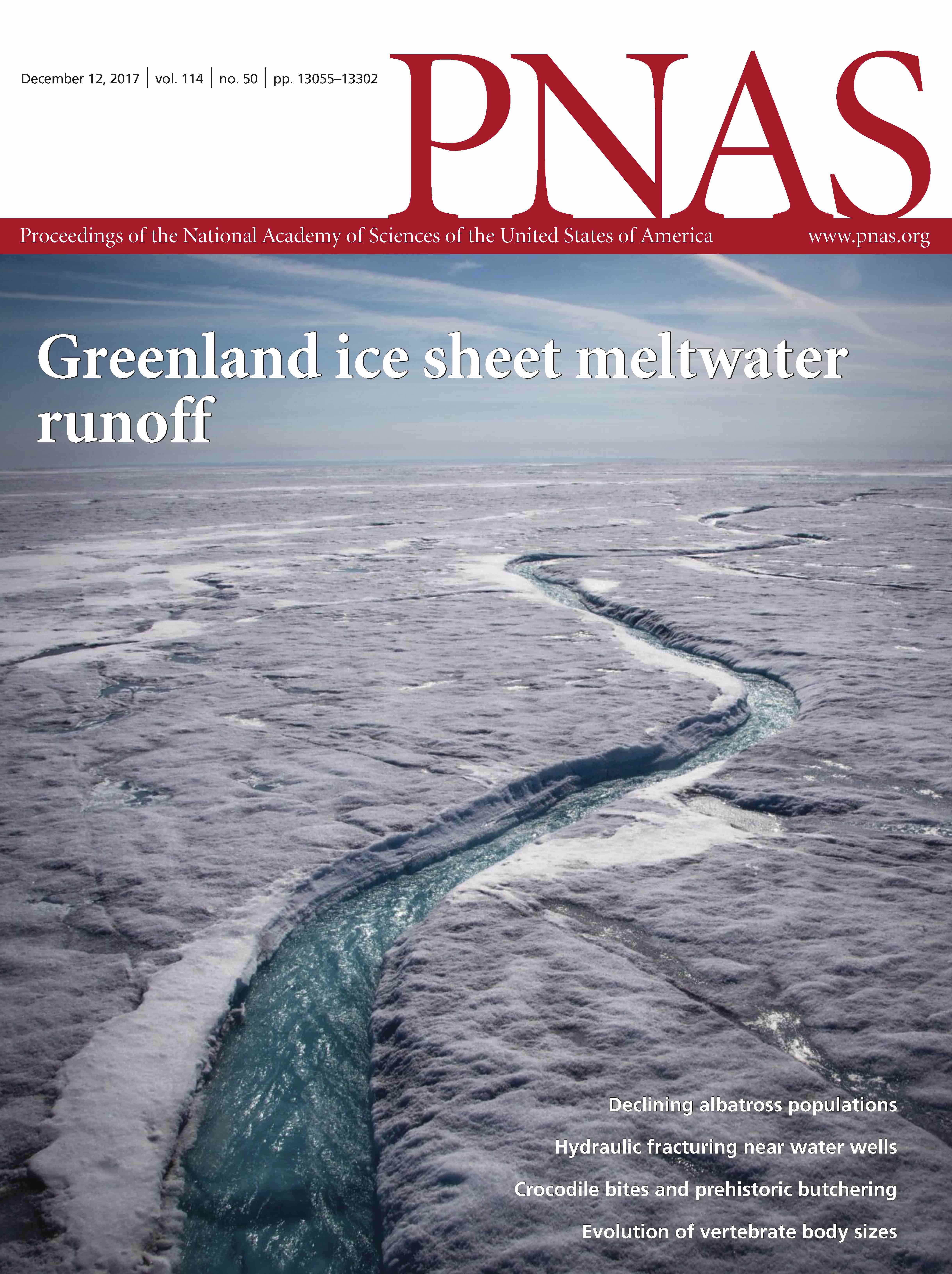 In Publications see a new study led by colleague Larry Smith in which the fate of the meltwater on the Greenland ice sheet is investigated. This study featured on the cover of the December 2017 issue of PNAS and a cool picture story in the New York Times!
In Publications see a new study led by colleague Larry Smith in which the fate of the meltwater on the Greenland ice sheet is investigated. This study featured on the cover of the December 2017 issue of PNAS and a cool picture story in the New York Times!
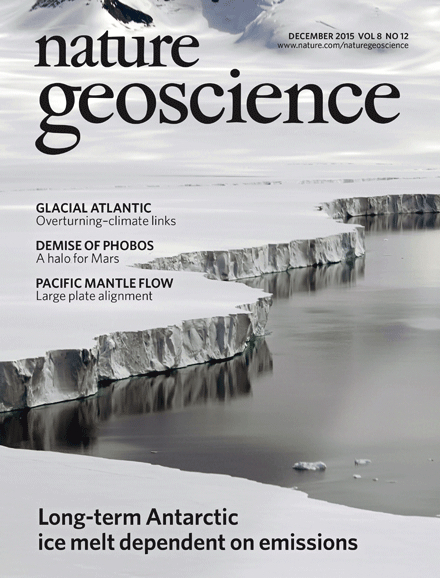 In Publications see an important study led by colleague Luke Trusel from WHOI in which he models the future of Antarctic ice shelves in relation to warming scenarios. This study featured on the cover of the December 2015 issue of Nature Geoscience!
In Publications see an important study led by colleague Luke Trusel from WHOI in which he models the future of Antarctic ice shelves in relation to warming scenarios. This study featured on the cover of the December 2015 issue of Nature Geoscience!
Also in Publications see another exciting study led by colleague Stephen Cornford from BAS in which he models Antarctic ice sheet retreat.
Watch the largest iceberg calving event caught on tape thus far: Jacobshavn Isbrae, west Greenland. Footage is part of a recently released documentary film on the world's disappearing ice.
Introduction
This page provides short descriptions of a selection of new and live projects. You can contact me for details or data.
Modelling the PFA
A remarkable recent discovery by the Arctic Circle Traverse is that of a semi-permanent liquid water body in the Greenland firn layer, named the perennial firn aquifer (PFA). The PFA has been traced by airborne and ground-based radar to exist mainly in the southeastern Greenland ice sheet at elevations between 500 and 2100 m asl and in isolated pockets in the southern and western ice sheet. The current hypothesis is that a combination of high melt rate and high accumulation is required for the PFA to develop, recharging the PFA in summer and insulating it from the cold wave in winter, see Publications. Currently it is unknown whether the PFA is a permanent or a transient feature. To address these issues, we are currently applying a state-of-the-art regional climate model to a firn model at high horizontal (app. 5 km) and vertical (cm-m) resolution for a period that comprises the recent past and the remainder of the current century (1958-2100).
iWS: a new generation of AWS
The current IMAU AWS design is powered by a relatively large number of lithium batteries and has intricate external wiring, rendering it prone to damage and incompatible with ever-stricter international transportation rules for lithium batteries. Moreover, with this high level of international collaboration, a continuously changing group of researchers and technicians should be able to swiftly deploy and maintain our AWS. In order to overcome these problems, a radically different AWS design was proposed, the intelligent Weather Station for polar use (iWS). iWS uses ultra-low power consumption sensors and electronics (including datalogger), enabling the full integration of electronics and all but two of the AWS sensors in a single unit (wind speed and radiation remain external). In combination with wireless internal and external data communication, this eliminates the need for vulnerable (external) cables and connectors, and greatly facilitates/shortens AWS installation, maintenance and repair visits. With power consumption reduced by over 95%, only three lithium batteries are required to power an iWs: this saves the environment, enhances transport safety/flexibility and reduces costs. Depending on whether the surface is ablating ice or accumulating snow, an independent, locally powered ultrasonic height sensor or snow thermistor string is installed next to the iWS, which communicate their data wirelessly to the iWS unit through Bluetooth. In melt areas over grounded ice, the iWS is combined with WiSe, a system of up to 32 wireless sensors that transmit englacial temperature and water pressure data through a maximum of 2400 m thick ice. We plan a four-year development, test and transition period (2012-2015), after which iWS is envisaged to replace all current UU/IMAU AWS.
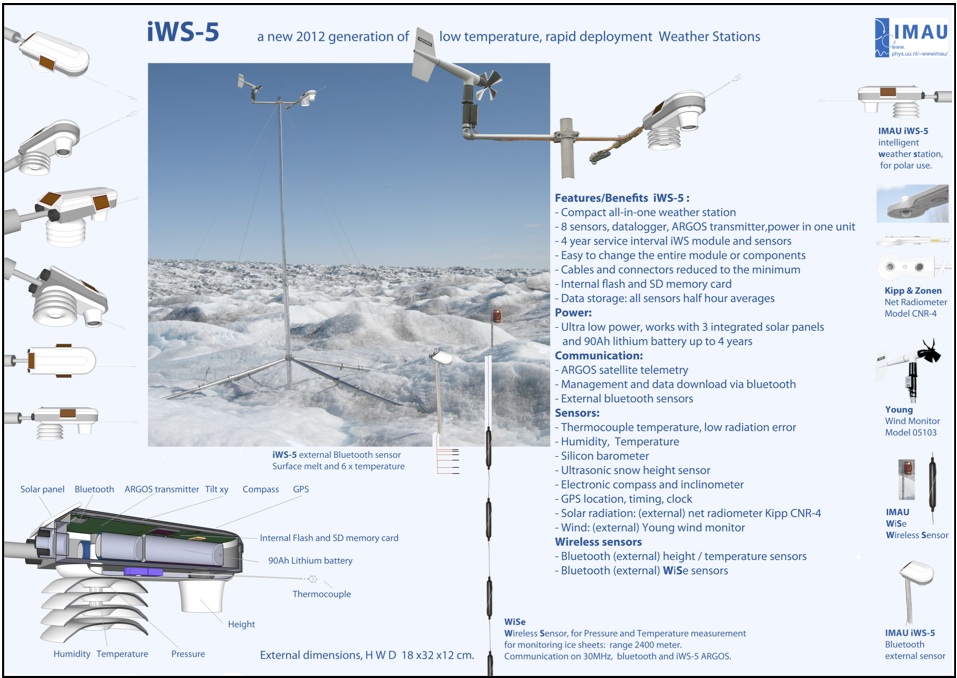
The intelligent Weather Station for polar use, version 5 (iWS-5). Poster presented at the Workshop on Automated Measuring Systems on Ice Sheets and Glaciers, Pontresina, March 2011). Click here for larger version
Greenland AWS network
Coinciding with the Greenland Ice Margin Experiments in the summers of 1990 and 1991 (GIMEX 90/91), IMAU started annual surface mass balance and ice velocity measurements along the K-transect near Kangerlussuaq, West Greenland. Initially, the K-transect consisted of seven stake sites running from the ice margin at app. 400 m asl (S4) to the equilibrium line (S9 at app. 1500 m asl). The transect was extended to S10 at app. 1800 m asl in August 1994. In August 1995, an automated measurement program was started with the installation of two sonic height rangers at S5 and S6, followed by the installation of the first IMAU Greenland AWS at S6 in August 1996, and at S5 in August 1997. Up to several m of ablation per year required the use of stations that stand freely on the ice surface. Ice ablation is tracked using a separate sonic height ranger, fixed to the ice, and stakes at non-AWS sites. In August 2003, three newly built AWSs were installed at S5, S6 and S9 (see figure below). The AWS network was again expanded in August 2010 with an additional AWS at S10. In August 2006 custom-made, low-cost single-frequency GPS receivers to measure ice velocity were installed at all sites. These sensors detected large and rapid ice velocity fluctuations in response to varying meltwater input from the surface, which motivated the development of the wireless sensor (WISE), capable of measuring and transmitting subglacial water pressure and temperature through thick ice. In the framework of the EU FP7 program ice2sea, a WISE prototype was installed below the ice at SHR at appr. 600 m depth in July 2010, together with 28 equally spaced wireless temperature sensors. For more information visit the IMAU AWS website.
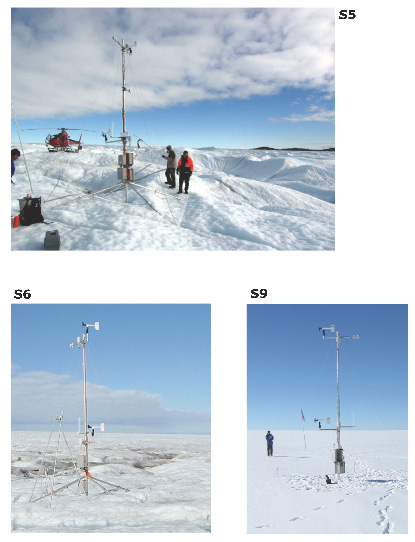
IMAU AWS at S5, S6 and S9 in the ablation zone of the ice sheet in west Greenland, August 2008
Antarctic AWS network
In situ observations remain essential to develop, evaluate and improve regional climate models, ice dynamical models and subglacial hydrological models. To that end, IMAU operates eight Automatic Weather Stations (AWS) in Antarctica: three in Dronning Maud Land (Utsteinen near station Princess Elisabeth, in collaboration with Belgium; Kohnen Base and Halvfarryggen, in collaboration with the Alfred Wegener Institute), two in interior East Antarctica (Plateau Station B and Pole of Inaccessibility, installed by the first leg of the Norwegian-US traverse in 2007/08) and three on Larsen B/C ice shelves (AWS14, AWS15 and AWS17, in collaboration with the British Antarctic Survey). The AWS at Maudheimvidda was transferred to the Finnish Antarctic Program in 2012. Each year, the University of Wisconsin publishes an updated map of operational Antarctic AWS. For more information visit the IMAU AWS website.
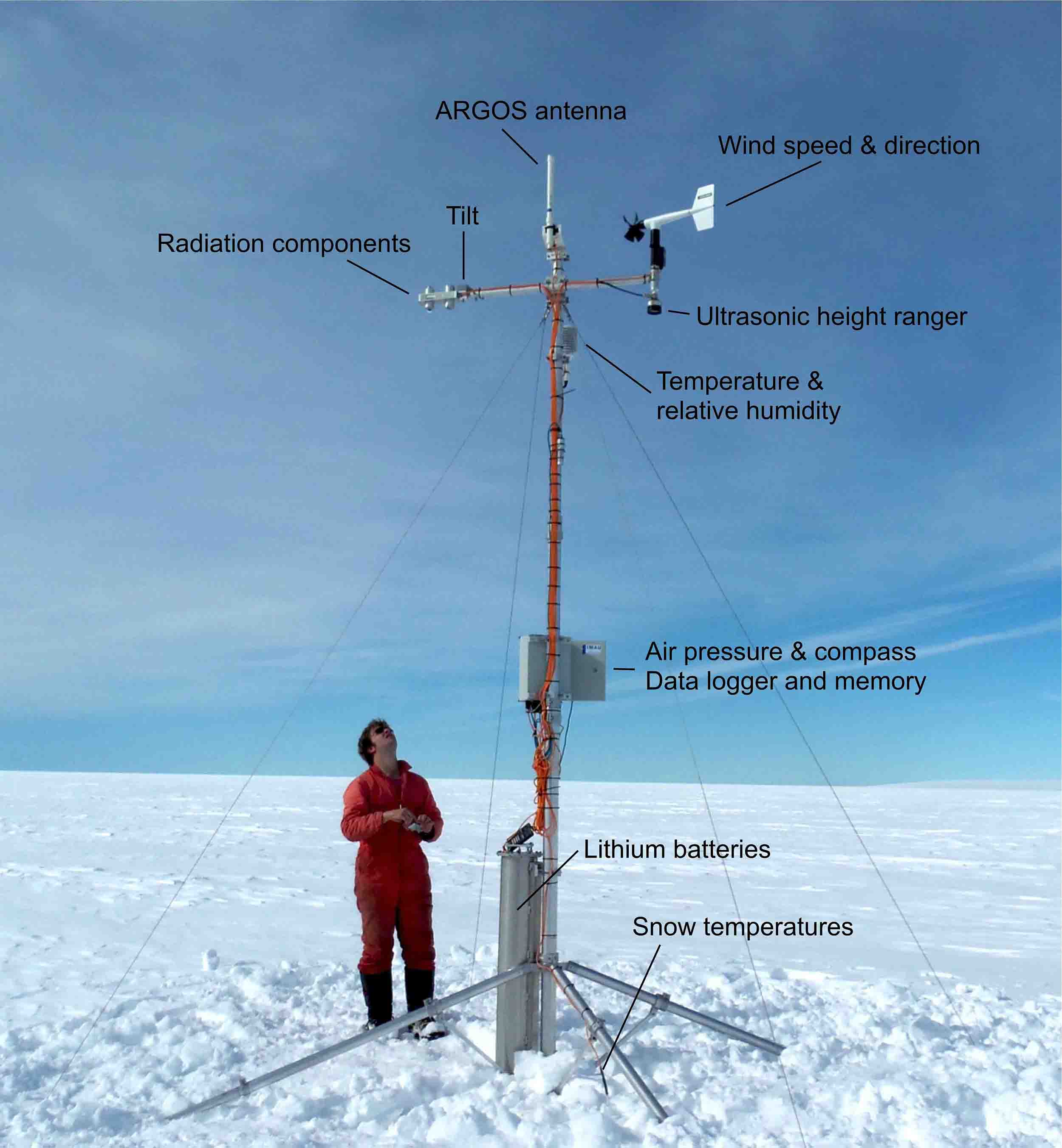
IMAU AWS at Scar Inlet, Larsen B ice shelf, February 2011. Note the watertight enclosure for the batteries